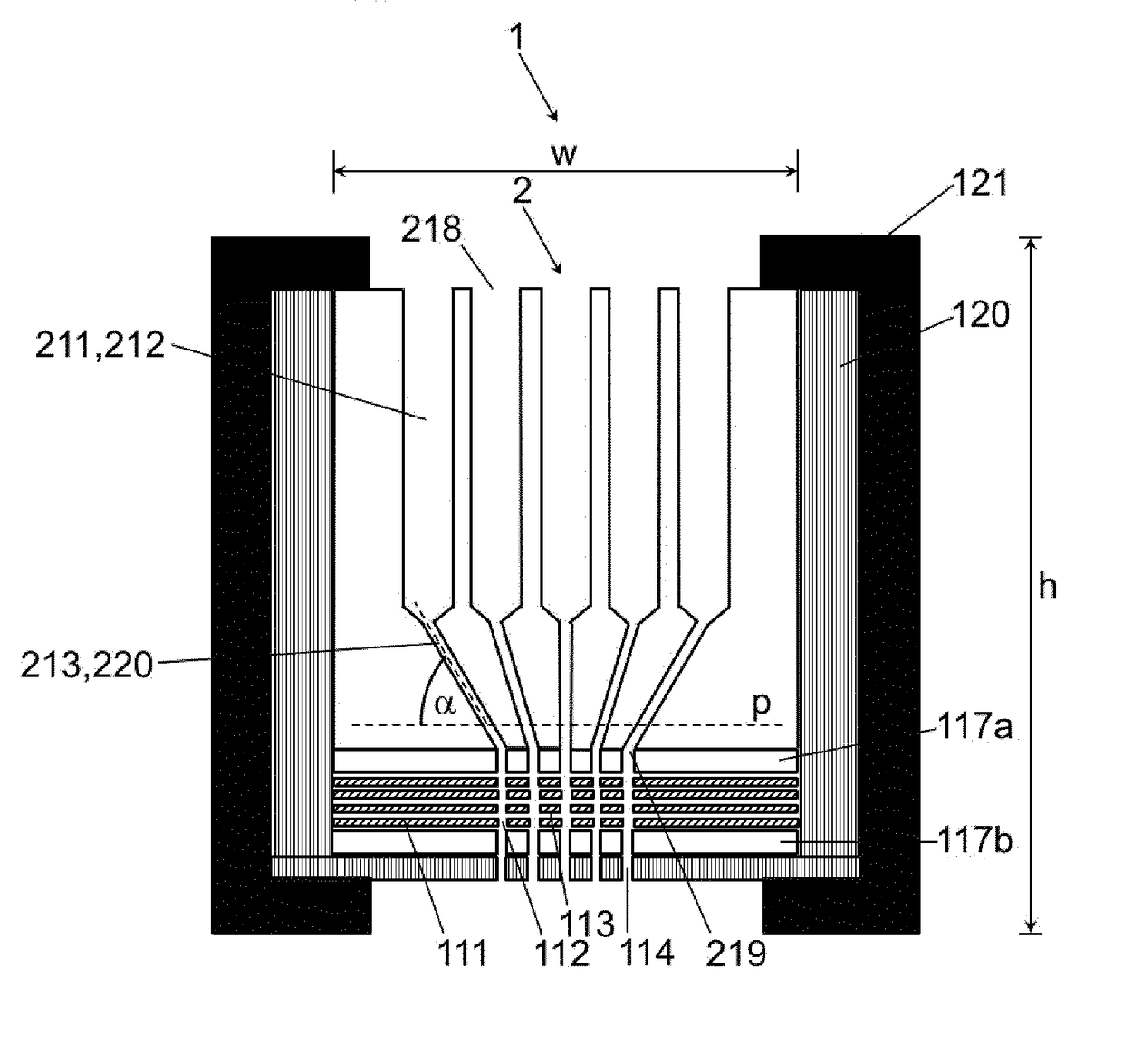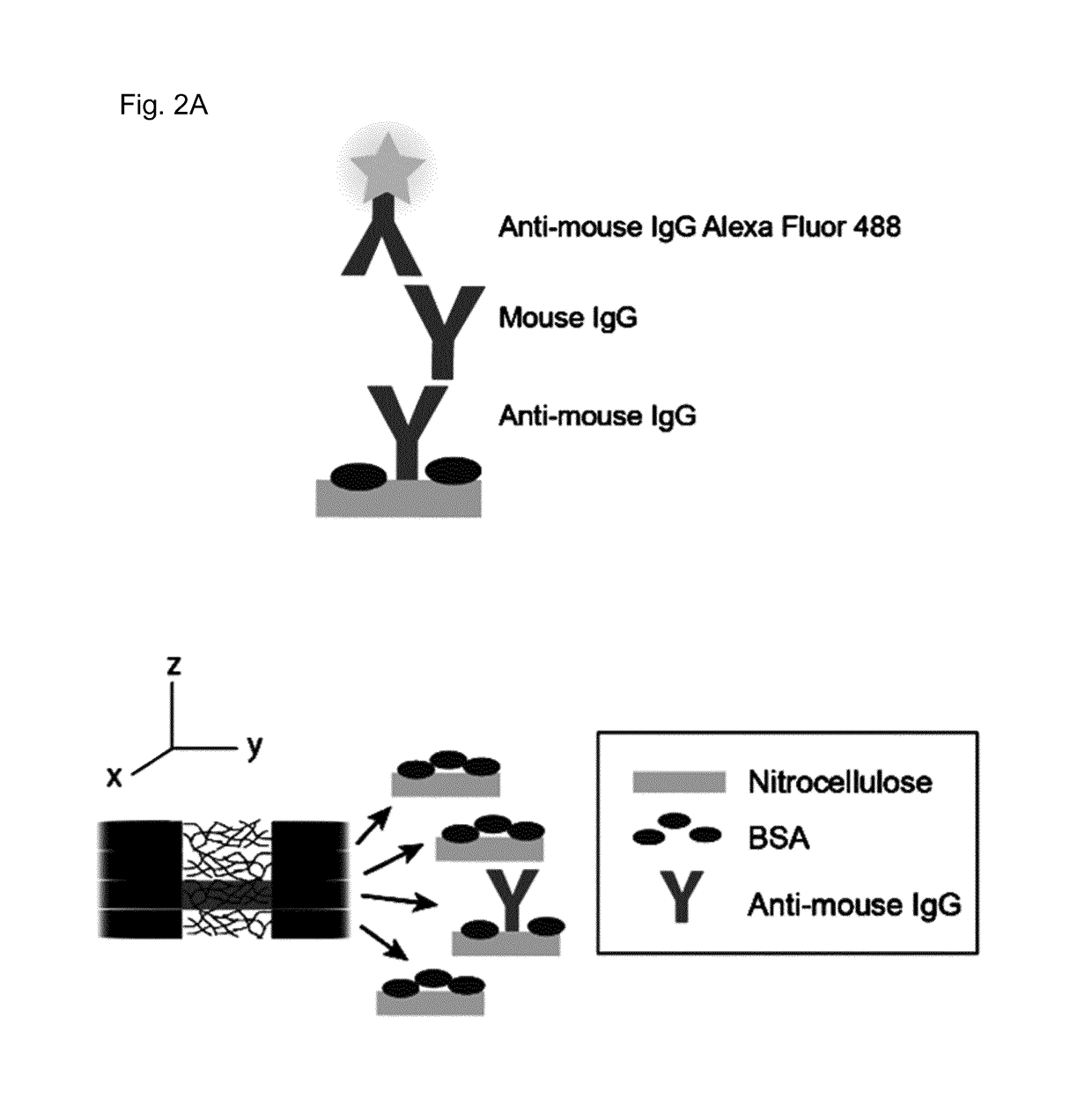Device and method for analysing liquid samples
a liquid sample and device technology, applied in fluid controllers, laboratory glassware, laboratory apparatus, etc., can solve the problems of poor signal-to-noise ratio, low signal-to-noise ratio, and system lack of high signal-to-noise ratio and throughput of microarrays, and achieve high signal-to-noise ratio, increase the sensitivity of microarrays, and high throughput
- Summary
- Abstract
- Description
- Claims
- Application Information
AI Technical Summary
Benefits of technology
Problems solved by technology
Method used
Image
Examples
examples
[0288]Volume Dependency.
[0289]A sandwich assay using different sample volumes demonstrated that the FoRe array captures all the analyte as it flows through the layers. The stack was assembled as shown in FIG. 2A; the third layer was functionalised with anti-mouse IgG and the two layers above and one layer below were blocked with BSA. Three experiments were performed, each with a different concentration of mouse IgG (i.e. 5 pM, 25 pM, or 100 pM) spiked into 1 mg / ml of BSA to represent the high abundance serum proteins. For a given experiment, each volume (1 to 6 μl, in 1 μl increments) was injected in triplicate and the negative control consisted of six spots exposed to 6 μl of 1 mg / ml BSA (three for the 5 pM sample). These three concentrations were chosen because in a system sensitive to antigen amount the curves overlap in this volume range (i.e. 5 μl of 5 pM equals 1 μl of 25 pM and 4 μl of 25 pM equals 1 μl of 100 pM). After manually injecting the samples, the device was spun at ...
PUM
 Login to View More
Login to View More Abstract
Description
Claims
Application Information
 Login to View More
Login to View More - R&D
- Intellectual Property
- Life Sciences
- Materials
- Tech Scout
- Unparalleled Data Quality
- Higher Quality Content
- 60% Fewer Hallucinations
Browse by: Latest US Patents, China's latest patents, Technical Efficacy Thesaurus, Application Domain, Technology Topic, Popular Technical Reports.
© 2025 PatSnap. All rights reserved.Legal|Privacy policy|Modern Slavery Act Transparency Statement|Sitemap|About US| Contact US: help@patsnap.com



